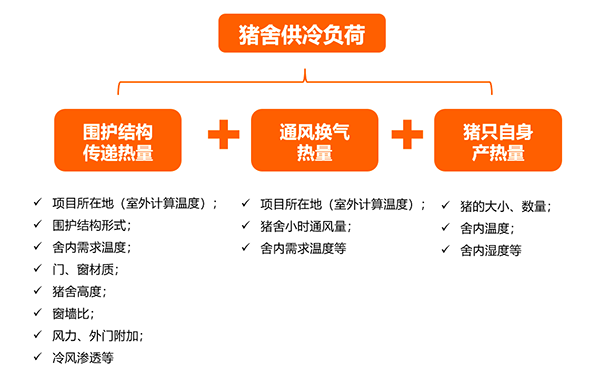THE KNOWLEDGE OF POSITIVE PRESSURE AIR CONDITIONING BOAR STATION
June 29, 2022
In the post-ASF era, air filtration system has almost become the standard of pig farms, especially the boar stations with the highest biosafety level are equipped with primary effect and sub-high efficiency filters.?At present, most of pig farms still use negative pressure ventilation system, in the case of air filtration, because it is difficult to ensure air tightness in the piggery building, the unfiltered air outside the piggery is easy to be inhaled, reducing the effect of the air filtration system.?The positive pressure ventilation system is to send the filtered air into the piggery with a positive pressure fan, so that the air pressure in the house is greater than the outside air pressure, so the requirements for air tightness of the house are not so strict, which can ensure the effect of air filtration.?However, compared with the negative pressure ventilation system, the system is difficult to form a large air speed in the house, and the air cooling effect is limited, and the cooling effect is not ideal.?This paper introduces a kind of positive pressure air conditioning ventilation system, which can satisfy the requirements of filtration system and solve the problem of cooling in summer.?The following is the composition and key points of the system design introduction.
System composition
As shown in the figure below, the positive pressure air conditioning system mainly includes air conditioning unit, positive pressure fan, air inlet duct, ceiling air inlet window and exhaust window systems.

Schematic diagram of positive pressure air - conditioned boar station model

Cross section diagram of positive pressure air conditioning system

Longitudinal section diagram of positive pressure air conditioning system
Air conditioning refrigerating load
According to thermal balance, the heat that needs to be removed from the piggery is calculated. The heat that needs to be removed from the piggery mainly includes three parts: heat transmitted by enclosure structure, ventilation heat and heat produced by pigs, as shown in the figure below:

Among them, the heat transfer from maintenance structure is calculated according to the heat dissipation model of building maintenance structure stipulated in the “Code for Thermal Engineering Design of Civil Buildings”.??The ventilation heat was calculated according to the ventilation volume of pigs and the calculation parameters of air conditioning in different areas in the “Code for Design of Heating Ventilation and Air Conditioning for Civil Buildings”.??The heat production of pigs is calculated according to the latest research results of heat production of pigs "Calculation of Heat Production And Moisture Production of Pigs In New Pig Farm" jointly published by Qingdao Bigherdsman Livestock and Poultry Research Institute and New Hope Liuhe Co., LTD. ?

Code for thermal design of civil buildings and software for enthalpy and moisture diagrams

Calculation table of heat and moisture production of new pig farm
The fan selection
Correct selection of the fan is the key to the successful operation of the system. The fans not only needs to overcome the pressure generated by the three-proof net, the primary and the sub-high-efficiency filter, but also maintain the pressure of ceiling air duct and inside the pig house. In addition, if the pig house is equipped with a deodorization system, the pressure generated by the deodorization system will also increase. Therefore, the fan needs to meet the pressure requirement of at least 100pa.

Control system
Positive pressure air-conditioned pig houses require increased pressure control compared to traditional ventilation systems. In order to ensure a positive pressure environment inside the pig house, a pressure sensor is required to control the size of the air outlet of the pig house according to the static pressure in the house to ensure that the pressure inside the house is higher than that outside the house while the pressure sensor controls the fan according to the static pressure in the air duct of the ceiling attic to maintain the static pressure in the air duct.
